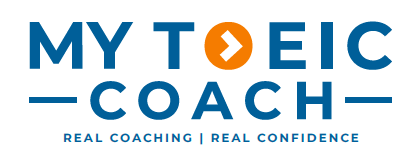🧠 TOEIC Trap: By vs With — Who Did It vs How It Was Done
You see:
The message was written ___ the manager.
Two options: by or with.
Both sound fine. Only one gets the point.
TOEIC uses this because most test-takers choose by “feel.”
But this trap isn’t about sound — it’s about focus.
🎯 Why TOEIC Wins This Point
By and with both fit in passive sentences.
The difference?
By → tells you who did the action.
With → tells you what was used to do it.
💣 The One-Second Trigger
Ask:
“Is this about a person or a tool?”
Person → by
Tool / object → with
👇 Watch It in Action
✅ Correct
The report was prepared by the assistant.
(Person = who did it) → by
✅ Correct
The proposal was printed with the colour printer.
(Tool used to do it) → with
✅ Correct
The contract was signed by the director.
(Person = who did it) → by
✅ Correct
The photos were taken with a smartphone.
(Tool used) → with
🧪 TOEIC-Style Practice
The announcement was made ___ the CEO.
🧠 CEO = person → by
The invoice was created ___ accounting software.
🧠 Software = tool → with
The documents were approved ___ the manager.
🧠 Manager = person → by
The presentation was prepared ___ PowerPoint.
🧠 PowerPoint = tool → with
📝 Your Turn
Fill each blank with by or with.
Use the one-second check: person → by / tool → with.
The memo was signed ___ the HR director.
The email was sent ___ a shared account.
The decision was made ___ the board of directors.
The sketch was drawn ___ a digital tablet.
Answer Key + Coaching
✅ by — HR director = person
✅ with — shared account = tool/source used
✅ by — board of directors = people doing the action
✅ with — digital tablet = tool used
🔁 Takeaway Rule
In passive sentences, don’t trust your ear — trust the logic.
Who did it? → by
What was used? → with
Final Word
TOEIC hides this trap in simple, familiar sentences.
One quick “person or tool” check, and you take the point every time.
For more strategies and resources to master TOEIC word-choice traps, visit the English Library Collection and start locking in sentence-focus confidence today.

